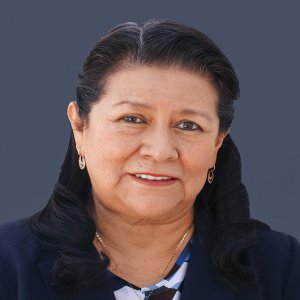Campeche Basin Veteran Surveys Port Readiness

STORY INLINE POST
Q: What would you consider to be the most important milestones in Gema’s history?
A: My father started the group over 50 years ago as a workshop focused on diesel engine repairs. The group integrated itself into the energy and oil and gas sectors between 1981 and 1985, which were considered important for the growth of those industries in Mexico and in Ciudad del Carmen. Since then, we have been opening new companies while administering various lines of business, from oil and gas sector services, such as NDT and maintenance of water and other fluid treatment equipment in vessels and offshore facilities, to other services external to the sector, such as Ciudad del Carmen’s real estate. All of these business lines were affected by the 2015 downturn. Since then, we have successfully restructured our growth and investments around the needs of the market.
Q: How is Ciudad del Carmen adapting to the latest industry developments?
A: Since 2015, there has been an enormous reduction in activities, which represented a significant economic adaptation process for Ciudad del Carmen. Oil and gas businesses and people in the city’s business community had to completely change their routines and methods. To be honest, it has changed our lives. By comparison, the current crises have occurred all of a sudden but we are prepared to deal with them. Many companies, like our group, have diversified their offshore business to the Campeche Basin beyond Ciudad Del Carmen. For example, we are positioned to operate from the port of Dos Bocas in Paraiso, Tabasco. This has been convenient for us since a large number of shipyards and harbors in Ciudad del Carmen have greatly reduced their maintenance activities. At the same time, Ciudad del Carmen’s growth and development are being affected by the increased activity from private operators when compared to the port of Dos Bocas. One of the main reasons for this is the physical characteristics of the port, which now lacks the depth and draft necessary to accommodate these operators. Dos Bocas also needs a draft increase, but for now its current draft is sufficient.
Q: What projects are you executing in Dos Bocas?
A: We are developing and managing our current project in Paraiso made up of shore base services and activities for ENI. This has included the development of yards inside and out the port for very specific storage needs, equipment rentals and transfers, provision of specialized personnel, harbor clearances, regulatory compliance, and other logistical procedures. Basically, we function as the bridge between their offshore operations and their onshore headquarters. We acquired this contract through a public tendering process that ENI organized in May of last year. Our first contact with them took place almost two years ago when we first rented out harbor space and warehouses to them. We are using that work to develop other integrated one-stop-shop shore base and logistical models for the shallow water private operators that are expanding their activities this year while their fields enter the development and production phases. We have to be careful because these large international companies guard their operations very closely. We also have to consider that many of these operators are reprogramming their time frames and rescheduling their deliveries toward the beginning and middle of next year to account for the current oil price situation. Our plans for the rest of the year have to be modified accordingly.
Q: How can this new demand for offshore logistics be satisfied by alternative ports?
A: I would say the Seybaplaya port is not a viable option for private oil and gas operators due to the geographical location of their fields. These are located closer to the border between the states of Tabasco and Veracruz, near the Coatzacoalcos port, or north of the Frontera port in Tabasco. Logistically, this distance can increase operational costs by as much as 200 percent, especially during the field development phase, which involves the careful transportation of heavy specialized equipment. Meanwhile, Coatzacoalcos is an attractive option for us, especially as Dos Bocas becomes saturated and its shortage of waterfront space becomes more evident. Dos Bocas is a port that has to be shared with other industries, such as the sugar and fuel industry, which creates a significant logistical bottleneck due to the time it takes to load and unload vessels that handle that type of cargo.
Coatzacoalcos has significant fluid capabilities but it also suffers from a degree of saturation due to lack of technology to solve todays bureaucracy, along with crime issues. Despite these problems, we remain very interested in Coatzacoalcos, especially because it is expected to grow, along with the river port of Minatitlán and its adjoining refinery, as a result of the Transisthmic Corridor’s future development. Dos Bocas has a bright future ahead. We have developed up to 2.5ha of its remaining port space and other 2ha outside the port. This development will be extremely necessary to satisfy future demand. The development of harbor waterfront space along with 25ha of storage and laydown areas is a current project of API Dos Bocas. This will also become a greater area of concern and a business opportunity for national companies. These companies will face the more stringent international standards and expectations that operators will bring with them.
Gema is a group of companies based in Ciudad del Carmen that began as a diesel engine repair workshop in 1963. It transitioned to the oil and gas sector in 1981 and has since then diversified itself into maintenance and a broader portfolio of offshore services.








 By Pedro Alcalá | Senior Journalist & Industry Analyst -
Fri, 06/26/2020 - 10:01
By Pedro Alcalá | Senior Journalist & Industry Analyst -
Fri, 06/26/2020 - 10:01








